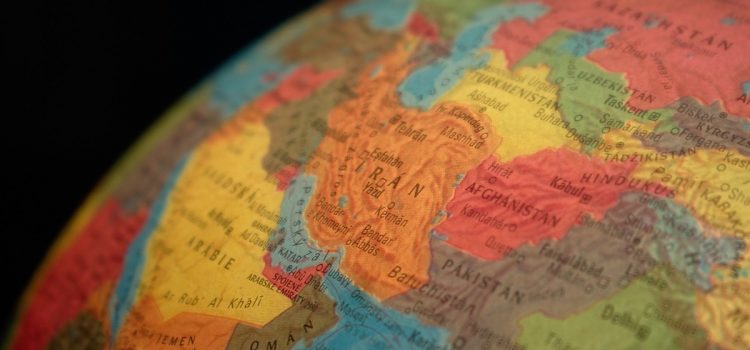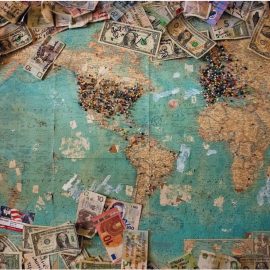

This article is an excerpt from the Shortform book guide to "His Very Best" by Jonathan Alter. Shortform has the world's best summaries and analyses of books you should be reading.
Like this article? Sign up for a free trial here.
Why did Iran take American hostages in 1979? Why did it take so long to free them? What should President Carter have done differently?
Biographer Jonathan Alter can’t ignore the crisis that defined much of the presidency of Jimmy Carter—the Iran hostage crisis. Alter details the road to the crisis, Carter’s resistance to using military force, and the final push to free the hostages just as Carter’s presidency came to its end.
Read on to learn about this dark chapter in American history.
The Iran Hostage Crisis
For Jimmy Carter, the Iran hostage crisis unraveled any of the success he enjoyed as president. Jonathan Alter discusses the crisis in his book His Very Best.
While Carter was achieving a measure of success negotiating peace between Israel and Egypt, the political situation in Iran was deteriorating faster than anyone in the US realized. The Iranian Revolution and the 444-day hostage crisis that followed would become for many people the defining historical event of Carter’s presidency, completely dominating his last year in office.
In Iran, Ayatollah Khomeini gained a following as a fierce critic of Mohammad Reza Shah, Iran’s dictator since 1953, but the CIA never saw Khomeini as a serious threat to world peace. In 1978, the Shah’s health began failing, and Khomeini’s supporters launched violent protests to demand the Shah’s removal. Alter writes that when the Shah asked the US for aid to prop up his regime, Carter refused, believing that without a dictator, Iran would return to democratic rule. Suffering from cancer, the Shah went into exile in January 1979 to seek medical treatment abroad while Khomeini amassed power in his country.
(Shortform note: Carter’s hope that Iran would become a democracy once the Shah stepped down is an example of what McMaster calls “strategic narcissism” in Battlegrounds. In particular, Carter’s belief was based on a faulty assumption—shared by many American policymakers—that nations inevitably become capitalist democracies as the result of a natural progression over time, though history has shown this is not always the case.)
Alter argues that there was nothing Carter could have done to prevent the Shah’s downfall or Khomeini’s rise to power, but he notes that Carter was taken aback by the strength of anti-US sentiment in Iran. So as not to stoke that anger—and to protect US citizens still in Iran—Carter repeatedly denied the Shah entry into the US until October 1979, when he was told that the Shah would die without treatment at an American hospital. Giving in to his humanitarian values, Carter granted the Shah temporary medical asylum. The Iranian response was stronger than anyone expected.
| The Shah and the Ayatollah Mohammad Reza Shah Pahlavi, commonly referred to as the Shah, or “king,” succeeded his father as Iran’s constitutional monarch in 1941. He gradually amassed power over the following decades, bringing the army under his control and sidelining the country’s elected government. Though he made reforms to modernize Iran, by the time of Carter’s presidency the Iranian people saw the Shah as a proxy for US and British control of their nation. The Shah’s rival, Rouhollah Khomeini, was a popular religious leader, or “ayatollah,” who opposed the Shah’s measures to liberalize Iranian society, such as giving non-Muslims and women the right to vote. In 1963, Khomeini was imprisoned for speaking against the Shah, triggering anti-government demonstrations. Khomeini was later exiled from the country, but that didn’t silence his criticism of the Shah. While Alter writes that the intelligence community was blind to Khomeini and the rise of his followers, declassified documents from US staff in Iran show that officials there knew about Khomeini’s growing Islamist movement, but their warnings went unnoticed by their Washington superiors. |
The Hostages Are Taken
Islamist groups within Iran believed the Shah’s presence in the US was part of a scheme to return the Shah to power. On November 4, 1979, under Khomeini’s direct approval, Iranian students stormed the US embassy in Tehran looking for evidence of a plot against Iran, taking the staff as prisoners in what was meant to be a short occupation. A rescue was unfeasible since Tehran was so far from US military forces. More than that, Carter feared that any attack would result in hostage deaths while dragging the US into another war. Carter placed sanctions on Iranian oil, froze Iranian bank accounts within the US, and made one attempt at a military rescue that failed because of the US military’s inability to coordinate between branches.
(Shortform note: Despite Carter’s sanctions’ failure to achieve a swift release of the hostages, his actions set a template for negotiation that’s been followed by successive US presidents in dealing with conflicts with Iran. In 1987, President Ronald Reagan banned Iranian imports in response to attacks in the Persian Gulf, whereas President Bill Clinton did the same in 1995 to discourage Iran from pursuing nuclear weapons technology. In 2018, President Donald Trump reimposed sanctions that had been previously lifted as part of the 2015 Iran Nuclear Deal. According to the US State Department, sanctions have proved an effective tool for curbing Iran’s military strength and its funding of terrorism in neighboring countries.)
Within Iran, Khomeini used his control of the crisis to establish himself as the head of a constitutional theocracy while not allowing hostage negotiations to take place unless the Shah was returned to stand trial for alleged crimes against the Iranian people. Once it was clear that Carter wasn’t going to retaliate, Khomeini knew he could hold the hostages indefinitely. At home, the hostage crisis brought the American people together while painting Carter as an ineffective leader. Alter states that this was also the US public’s first introduction to radical Islam.
(Shortform note: Beyond painting Carter’s presidency in a negative light, the hostage crisis affected the attitudes of an entire generation of US citizens. Dramatic images of Muslim revolutionaries chanting “Death to America” solidified a perception in the American mind equating Islam with terrorism and violence. Analysis of the public response to the 2015 Iran Nuclear Deal suggests that Americans who reached adulthood before or during the hostage crisis were unsupportive of any favorable dealings with Iran even four decades later, while younger generations who weren’t closely aware of the crisis were more in favor of a peaceful resolution to their contemporary conflict.)
The Hostage Crisis Ends
Carter devoted nearly all his focus to resolving the hostage situation, attempting to negotiate through other countries as intermediaries instead of campaigning hard for reelection. Even the Shah’s death in June 1980 didn’t bring about the hostages’ release. Instead, Alter suggests that two other factors caused Khomeini to finally relent. One was Iraq’s invasion of Iran under the command of Saddam Hussein—suddenly, Iran needed access to the funds that were frozen in US bank accounts. The second factor was a fear that Carter’s electoral opponent, Ronald Reagan, wouldn’t share Carter’s hesitation to use military force if he won the election.
(Shortform note: New accusations regarding the hostages’ release came to light in early 2023, after Alter had written his biography of Carter. Retired legislator Ben Barnes told The New York Times that in 1980 he accompanied former Texas governor John Connally on a trip to the Middle East, during which Barnes alleges that Connally sabotaged Carter’s negotiations by telling Arab leaders that the hostages shouldn’t be released until after the presidential election. Barnes claims that Connally sent a message to Iran that Reagan would offer more favorable terms for the hostages’ freedom than Carter would.)
Thanks to Carter’s divided attention, the state of the economy, and the crisis in Iran, Reagan won a landslide victory. Nevertheless, Carter’s work wasn’t finished. In the final days of his presidency, Carter, at last, brokered a deal for the hostages’ freedom, though Khomeini delayed their release until Reagan took the oath of office. President Reagan announced the end of the crisis while Carter and Mondale flew to Germany to greet the freed captives in person. Although the public had turned against Carter, Alter reiterates that the president had kept the US out of war throughout all four years of his term, a feat unmatched by any following president.
(Shortform note: While the Iran hostage crisis was unusual in its extended duration and the way that it dominated global attention, it wasn’t by any means the last such situation. During the Lebanese Civil War from 1975-1990, over 100 foreign nationals were kidnapped and held hostage, either for ransom or political concessions, especially after Israel’s invasion of southern Lebanon in 1982. In 1986, President Reagan was accused of sending weapons to Iran in exchange for American captives in Lebanon. Though Reagan denied involvement in any “arms for hostages” deal, the scandal tainted the remainder of his presidency, though not to the extent that the Iranian crisis damaged Carter’s.)

———End of Preview———
Like what you just read? Read the rest of the world's best book summary and analysis of Jonathan Alter's "His Very Best" at Shortform.
Here's what you'll find in our full His Very Best summary:
- A fresh perspective on Jimmy Carter's time as president
- How Carter's early life shaped his political career
- The long-term effects of what Carter accomplished while president






